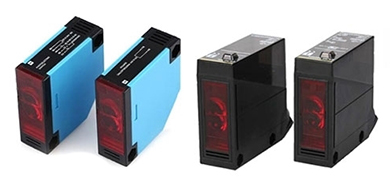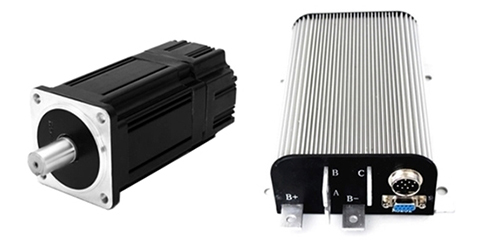How does Hall Sensor Work on BLDC Motor?
Hall sensor can also be called as the Hall encoder. The Hall sensor in the brushless DC motor controller is used to detect the rotation speed of the bldc motor. In some applications, it is necessary to adjust the speed of the brushless DC motor, and to ensure that the bldc motor remains unchanged at a certain speed, so it is necessary to add a Hall sensor that detects the speed for feedback. The brushless DC motor controller will output different control pulse signals according to the detected speed value, and finally achieve the purpose of quickly adjusting the speed of the brushless DC motor.
Classification of the encoder
According to the detection principle of encoders, encoders can be divided into optical encoders, magnetic encoders, inductive encoders, and capacitive encoders. The most common encoders are photoelectric encoders and Hall sensors. The photoelectric encoder is an optical encoder, and the Hall sensor is a magnetic encoder.
Working principle of encoder
Optical-electricity encoder working principle The photoelectric sensor is a sensor that converts the mechanical geometric displacement on the output shaft into pulse digital quantity through photoelectric conversion. The photoelectric sensor is composed of a photoelectric code disc and a photoelectric detection device. The photoelectric code disc is a circular plate with a certain diameter and a number of rectangular holes are equally opened. Since the photoelectric encoder is coaxial with the motor, when the motor rotates, the detection device detects and outputs the corresponding pulse signal. Generally, it outputs A and B square wave signals with a certain phase difference. Through the two output signals, the rotation direction of the brushless DC motor can be judged.
The photoelectric sensor is a sensor that converts the mechanical geometric displacement on the output shaft into pulse digital quantity through photoelectric conversion. The photoelectric sensor is composed of a photoelectric code disc and a photoelectric detection device. The photoelectric code disc is a circular plate with a certain diameter and a number of rectangular holes are equally opened. Since the photoelectric encoder is coaxial with the motor, when the motor rotates, the detection device detects and outputs the corresponding pulse signal. Generally, it outputs A and B square wave signals with a certain phase difference. Through the two output signals, the rotation direction of the brushless DC motor can be judged.
Hall encoder working principle
Hall sensor is a kind of sensor that converts the mechanical geometric displacement on the output shaft into pulse or digital quantity through magnetoelectric conversion. The Hall encoder is composed of Hall code disc and Hall sensor. The Hall code disc is equally arranged with different magnetic poles on a circular plate with a certain diameter. The Hall code disc is coaxial with the motor. When the motor rotates, the Hall element detects and outputs the corresponding pulse signal. Generally, it will output A and B square wave signals with a certain phase difference. Through the two output signals, the rotation direction of the BLDC motor can be judged.
The detection principle of photoelectric encoder and Hall encoder is the same. They are all detected by outputting A and B phase square wave signals. The difference is that the accuracy of the photoelectric encoder is much higher than that of the Hall encoder.
How to calculate the speed of a brushless DC motor?
The speed of the brushless DC motor is calculated by detecting the number of output pulses. The principle is probably as follows: For example, a brushless DC motor outputs 500 pulses in one revolution, as long as a fixed detection time is set by the microcontroller timer. If the time is 1 second, then the number of pulses within 1 second can be obtained through the external interrupt or input capture of the microcontroller. If 1000 high levels (1000 pulses) are detected within 1 second, it means that the motor has just made two revolutions. At this time, the corresponding speed can be calculated according to the diameter of the wheel. In order to improve the detection accuracy, you can also detect the high and low levels of the AB outputs at the same time.
In short, adding a Hall sensor to the brushless DC motor is to measure the speed of the bldc motor. Generally speaking, the Hall sensor can provide a feedback signal to the brushless DC motor controller. According to the feedback signal, the motor can modulate the signal and form a closed-loop control mode.

